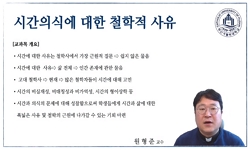Recently, various discussions have been conducted on teaching and learning methods considering the stage of cognitive development of elementary school students. Currently, most curriculums consist of conveying the concept of AI and experiencing intere...
http://chineseinput.net/에서 pinyin(병음)방식으로 중국어를 변환할 수 있습니다.
변환된 중국어를 복사하여 사용하시면 됩니다.
- 中文 을 입력하시려면 zhongwen을 입력하시고 space를누르시면됩니다.
- 北京 을 입력하시려면 beijing을 입력하시고 space를 누르시면 됩니다.

초등 인공지능 교육에서 ‘생각에 대한 생각’ 교육방법의 적용 연구 = A 'Thinking About Thinking' Approach in Elementary School AI Education
한글로보기https://www.riss.kr/link?id=A108530641
- 저자
- 발행기관
- 학술지명
- 권호사항
-
발행연도
2023
-
작성언어
Korean
- 주제어
-
등재정보
KCI등재
-
자료형태
학술저널
-
수록면
19-28(10쪽)
- DOI식별코드
- 제공처
-
0
상세조회 -
0
다운로드
부가정보
다국어 초록 (Multilingual Abstract)
Recently, various discussions have been conducted on teaching and learning methods considering the stage of cognitive development of elementary school students. Currently, most curriculums consist of conveying the concept of AI and experiencing interesting services, but discussions on essential educational goals are ambiguous. From this point of view, Minsky and Peppert, who initially discussed computing thinking and AI education for children, emphasize thinking about thinking as an educational goal and argue that programming, algorithms, and computers are efficient tools for expanding such cognitive capabilities. In this study, the perspective of “thinking about thinking” is designed and applied to elementary AI education, and whether it has a positive effect on children's ability to observe, express, and improve intelligent thinking. Among the ‘classification·group’ models of AI, unplugged activities for ‘thinking about thinking’ were designed and class experiments were conducted under the theme of image and sound recognition. As a result of analyzing the activity sheets and individual interview contents, the learner analyzed his or her intelligent behavior and judgment to solve the problem n-dimensionally and discovered various features for accurate algorithms. In addition, he recognized that ‘AI is an imitation of complex human intelligence'. In this study, a new perspective on educational goals and teaching and learning methods in elementary AI education and their effects were presented using the ‘thinking about thinking’ approach.
국문 초록 (Abstract)
최근 초등학생의 인지발달 단계와 교육목표를 고려한 교수학습 방법에 대해 다양한 논의가 진행되고 있다. 현재 대부분 교육과정은 인공지능의 개념을 취사 전달하고 흥미로운 서비스를 체...
최근 초등학생의 인지발달 단계와 교육목표를 고려한 교수학습 방법에 대해 다양한 논의가 진행되고 있다. 현재 대부분 교육과정은 인공지능의 개념을 취사 전달하고 흥미로운 서비스를 체험하는 것으로 이루어져 있으나, 본질적인 교육목표에 대한 논의는 다소 모호하다. 이러한 관점에서 초기에 어린이를 위한 컴퓨팅 사고력과 인공지능 교육에 대해 논의한 민스키와 페퍼트는 ‘생각에 대한 생각(thinking about thinking)’을 교육목표로 강조하며 프로그래밍, 알고리즘, 컴퓨터 등이 그러한 인지적 역량 확장을 위한 효율적인 도구라고 주장한다. 본 연구에서는 ‘생각에 대한 생각’ 관점을 초등 인공지능 교육에 설계·적용하고, 이것이 아이들의 지능적 사고에 대한 관찰, 표현, 그리고 개선 역량에 긍정적인 효과가 있는지를 확인하고자 한다. 이를 위해 인공지능의 ‘분류·군집' 모델 중 학습자의 실생활과 밀접한 이미지·소리 인식을 주제로 하여 ‘생각에 대한 생각’을 위한 언플러그드 활동을 설계 및 수업 실험을 진행하였다. 주제별 활동지와 개별 인터뷰 내용의 분석 결과, 주제가 진행될수록 학습자는 문제 해결을 위한 자신의 지능적 행위·판단을 n차원적으로 분석하였으며 정확도 높은 알고리즘을 위해 다양한 특징(feature)을 발견하였다. 또한, ‘인공지능이란 복잡한 인간의 지능을 모방한 존재’임을 인지하고 지능적 사고 행위의 절차를 명시적으로 표현하였다. 본 연구에서는 ‘생각에 대한 생각’ 접근 방법을 사용하여 초등 인공지능 교육에서의 교육목표와 교수학습 방법에 대한 새로운 관점과 그 효과를 제시하였다.
동일학술지(권/호) 다른 논문
-
ICILS 2018 컴퓨팅 사고력 과제에 대한 학생의 응답 행동 유형 분석
- 한국컴퓨터교육학회
- 상경아
- 2023
- KCI등재
-
직업계 고등학교 학생의 인공지능 리터러시 프로그램 개발 및 적용
- 한국컴퓨터교육학회
- 도윤미
- 2023
- KCI등재
-
책임윤리 기반의 초등학생을 위한 인공지능 윤리교육 프로그램 개발 및 적용
- 한국컴퓨터교육학회
- 송주영
- 2023
- KCI등재
-
메타버스 플랫폼에서의 게임 창작 활동 교육 프로그램 개발 – 초등 영재 학생을 대상으로
- 한국컴퓨터교육학회
- 백재순
- 2023
- KCI등재





 KCI
KCI DBpia
DBpia


